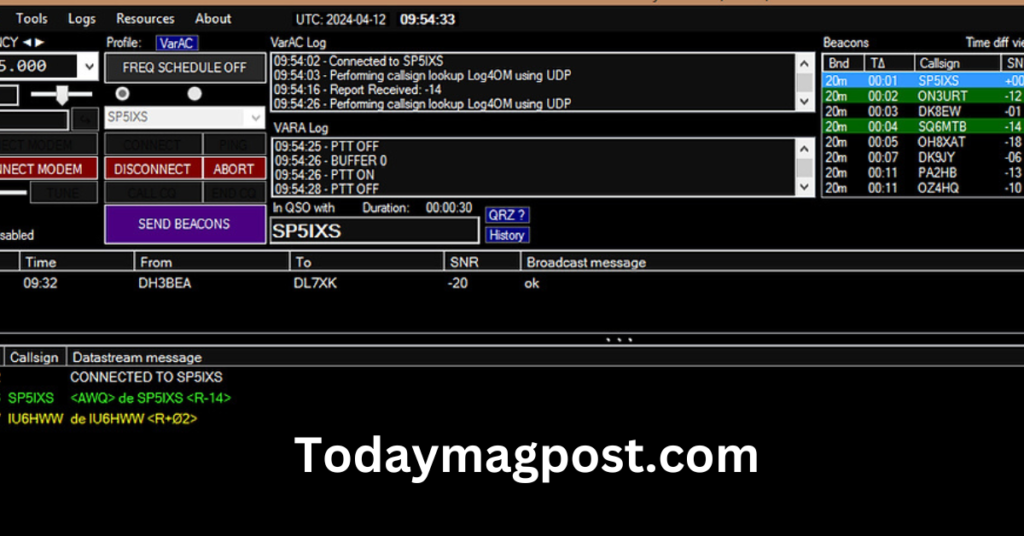In the world of amateur radio, effective communication hinges on the ability to identify operators and their associated call signs. This is where Log4OM Call Sign Lookup comes into play. This feature within the Log4OM logging software enhances user experience by providing essential information about call signs, enabling operators to connect more effectively. In this article, we’ll explore the significance of call sign lookups, how to use the Log4OM software for this purpose, and tips for optimizing your amateur radio operations.
ALSO READ: Exploring: Hura-Watch.net Quest of the Eternal Realm
What is Log4OM Call Sign Lookup?
Log4OM (Logging for Online and Offline Mode) is a powerful, free logging software designed for amateur radio operators. With a user-friendly interface and robust features, it allows hams to log their contacts, manage QSLs, and access various databases for real-time information about call signs, awards, and DXCC entities. One of its standout features is the Call Sign Lookup, which provides users with instant access to information related to specific call signs.
Why Use Call Sign Lookups?
The ability to look up call signs is crucial for several reasons:
1. Identifying Operators:
- Call signs serve as unique identifiers for amateur radio operators. Knowing who you are communicating with can enhance your operating experience, especially during contests or special events.
2. Understanding Location and License Class:
- A call sign can provide valuable information about the operator’s geographical location and license class, helping you gauge their operating privileges and expertise.
3. Enhancing QSO Quality:
- By knowing more about the operator, such as their station setup and previous QSOs, you can engage in more meaningful conversations, leading to higher-quality contacts.
How to Use Log4OM Call Sign Lookup
Step 1: Install Log4OM
First, ensure you have Log4OM installed on your computer. You can download it from the official Log4OM website. Follow the installation instructions provided.
Step 2: Access the Log4OM Call Sign Lookup
- Launch Log4OM: Open the software and navigate to the main interface.
- Enter Call Sign: Locate the Call Sign Lookup feature, typically found in the main menu or toolbar. Enter the call sign you wish to look up.
- View Results: The software will display relevant information, including the operator’s name, location, license class, and additional details from various databases.
Step 3: Make Use of Additional Features
Log4OM offers several features that complement the call sign lookup:
- Logging QSOs: After a successful contact, log the details directly within the software.
- QSL Management: Keep track of your QSL cards and requests for confirmation.
- Awards Tracking: Log4OM can assist in tracking your progress toward various amateur radio awards.
Tips for Optimizing Your Log4OM Call Sign Lookup
1. Stay Updated:
- Ensure your Log4OM software is updated regularly. New features and improvements can enhance the efficiency of call sign lookups.
2. Utilize Database Sources:
- Log4OM integrates with multiple databases for call sign information. Familiarize yourself with these sources to get the most accurate data.
3. Cross-Check Information:
- If you encounter discrepancies in call sign information, cross-check with other online databases or resources to confirm accuracy.
4. Engage with the Community:
- Participate in forums and groups related to Log4OM. Sharing experiences and tips can help improve your skills and knowledge in using the software effectively.
Conclusion
The Log4OM Call Sign Lookup feature is an invaluable tool for amateur radio operators, enhancing communication and operational efficiency. By understanding how to use this feature effectively, you can elevate your amateur radio experience, make meaningful connections, and ultimately become a more skilled operator. Whether you’re a seasoned ham or just starting, leveraging the power of call sign lookups will undoubtedly benefit your amateur radio journey.

1 Comment
Pingback: Track and Field Infinite Script :A Comprehensive Guide